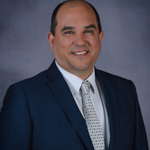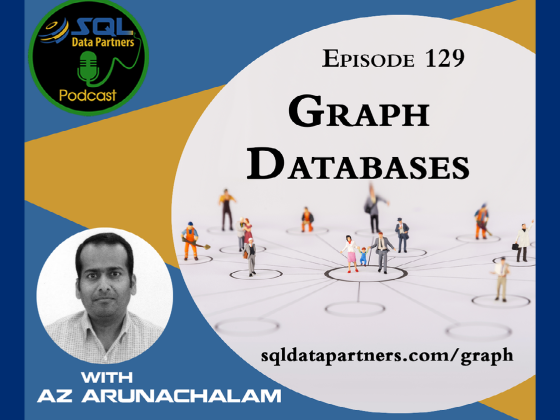Graph Databases
Books online state: “There is nothing a graph database can achieve, which cannot be achieved using a relational database.” Why then are we putting graph technology in SQL Server? To help me answer this question, I invite my friend AZ to chat about the Graph feature in SQL Server 2017 and introduce how graph differs from a relational model. If you have every tried to implement complicated hierarchies in SQL Server, you know what a pain this can be. I, for one, am hopeful this new feature will allow us to tackle the various relationships even though it may be lacking certain features compared with other graph databases.
Are you using graph technology in SQL Server or even another platform? I would be very interested to getting your thoughts on what you like and what you still find painful.
Episode Quotes
“We have lots of hidden columns that are not accessible, that SQL Server uses to maintain those behind the scenes.”
“In SQL Server, the more number of tables you join, it’s going to slow down exponentially. In a graph database, technically it should be linear, so you should see no slowing down if the number of tables increases. That’s one of the goals of a graph database.”
“There’s no way for you to do an installation to not install this component. It comes with the engine.”
“You don’t have to bring everything into the graph tables. All you need to do is bring in the keys for querying and things like that. You could use the Graph DB portion and refer back to the SQL Server tables for the data part of it.”
Listen to Learn
00:41 Intro
01:08 Compañero Shout-Outs
01:51 Tips & Tricks
03:46 Conference
04:25 Intro to the guest and topic
06:22 The purpose of Graph Database
07:36 How Graph is different from relational
10:20 Where might tooling be going in the next iteration?
12:25 Interacting with these tables in SSMS
15:22 The challenge of the visualization
17:29 Who will want to use Graph Database?
18:58 Other ways to see relationships?
20:59 Thoughts for developers
22:30 JSON support?
23:30 Possible future improvements and comparison to other graph databases
25:47 SQL Family Questions
30:21 Closing Thoughts
Credits
“Happy Rock” for Tips & Tricks by https://www.bensound.com
Our Guest

Azhagappan (Az) Arunachalam
Azhagappan (Az) Arunachalam has been working with SQL Server since v4.21/SQLNT. He started his career with troubleshooting at chip level, worked as a network engineer managing Novell NetWare networks, graduated into managing Windows NT, moved onto development, administered databases, and is currently working as an application database architect. He’s excited about all the cloud offerings that Microsoft and others have made possible, and in sharing his findings with aspiring data enthusiasts. He is a member of the Richmond Virginia PASS SQL Server Usergroup, and helps organize the SQLSaturday. He can be reached on twitter at @sqlaz.
Az’s blog: sqlaz.com
Meet the Hosts

Carlos Chacon
With more than 10 years of working with SQL Server, Carlos helps businesses ensure their SQL Server environments meet their users’ expectations. He can provide insights on performance, migrations, and disaster recovery. He is also active in the SQL Server community and regularly speaks at user group meetings and conferences. He helps support the free database monitoring tool found at databasehealth.com and provides training through SQL Trail events.

Eugene Meidinger
Eugene works as an independent BI consultant and Pluralsight author, specializing in Power BI and the Azure Data Platform. He has been working with data for over 8 years and speaks regularly at user groups and conferences. He also helps run the GroupBy online conference.

Kevin Feasel
Kevin is a Microsoft Data Platform MVP and proprietor of Catallaxy Services, LLC, where he specializes in T-SQL development, machine learning, and pulling rabbits out of hats on demand. He is the lead contributor to Curated SQL, president of the Triangle Area SQL Server Users Group, and author of the books PolyBase Revealed (Apress, 2020) and Finding Ghosts in Your Data: Anomaly Detection Techniques with Examples in Python (Apress, 2022). A resident of Durham, North Carolina, he can be found cycling the trails along the triangle whenever the weather's nice enough.
Want to Submit Some Feedback?
Did we miss something or not quite get it right? Want to be a guest or suggest a guest/topic for the podcast?
